If there’s one thing my experience in the online marketing industry has taught me, it’s this: SEO is still the king of the hill in terms of getting qualified leads online. Over the years we’ve been asked by our clients the same questions repeatedly about how they can improve their rankings, traffic and conversions, and what strategies and techniques make up an effective organic campaign in 2014.
I want to share with you today a look at what SEO is like when it’s done right, and what it takes to get amazing results for your campaigns. It’s important to focus on long-term, high quality solutions for increasing traffic as Google and other search engines refine their algorithms to filter through websites and weed out low quality ones.
But First, a Quick Background
The project, a website for a fireplace installer, has been with us since November 2013. It’s keywords at the onset were ranking 100+ on Google SERPs. We are targeting ten keywords under their current package.
What we found when we first began work on this campaign is that they needed on-page optimization. The content also needed work, as they were not optimized for search. They were ranking at 100+ in September for their keywords, and making relatively slow progress in terms of getting to the first page of the SERPs. Finally, they needed increased local presence.
Let’s go over the things that have changed since then.
Higher Rankings
At the beginning of the campaign in November, none of their keywords was holding at least the top three spots. One of their keywords was still ranking at 100+, while the rest were slowly progressing and were in need of a push to get them to the top of the SERPs.
We’ve seen a dramatic increase in the rankings since. 7 out of 10 keywords are already on the first page of SERPs, with the remaining 3 keywords trailing closely behind on the first half of the second page. The keyword they were targeting that was ranking at 100+ was the most drastic change of all: It went up from 100+ in December 2013 to 1 in January 2014. See the table below.
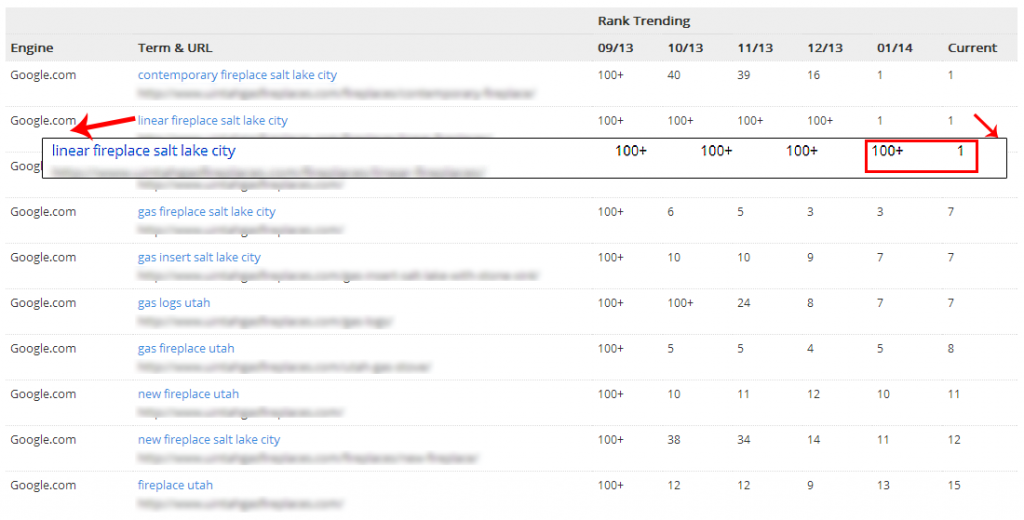
Increased Traffic
With the jump in rankings comes a jump in traffic as well. The traffic has increased significantly since the start of the campaign. We’ve increased all traffic by 708% from December to January alone, and we’re continuing to track the progress today. Organic traffic went up 602%, while their mobile traffic increased 408%.
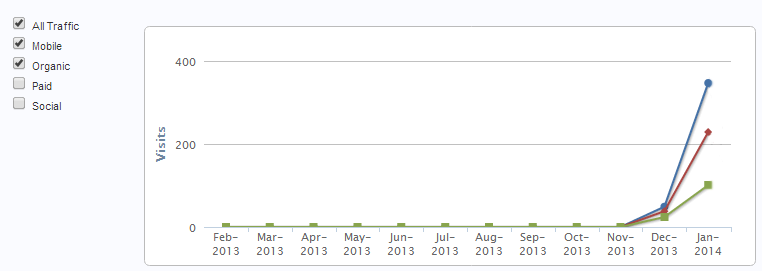
The graph shows that we’ve ranked the website significantly higher in a span of two months. We’ve laid strong foundations and implemented proper SEO, which gives us the confidence that these early results will last. I’ll get into the details in a bit.
What Did We Do?
The following elements are some of the things we improved in the client’s custom campaign. It takes a combination of different elements to rank a website given the evolution of Google’s algorithm. For this website and any website for that matter, you’ll need to structure your site properly and stay on top of the algorithm updates to ensure your methodology remains relevant and effective.
Laying the Groundwork
Laying strong foundations before beginning any SEO work ensures that the effort we put into the site in the weeks and months to follow will yield lasting results. This is the part that makes us confident that the rankings you saw earlier will be maintained in the future – we’ve done similar efforts with other websites that have been with us for longer, and they’ve ranked well into the first page of the SERPs through the different Google algorithm updates.
Part of the groundwork we implement includes installation of tools in their website (Google Webmaster Tools, Google Analytics, other SEO tracking tools) to ensure we get sufficient keyword and user behavior data for customizing their SEO strategy. The more significant change is that we’ve created custom goals to track for this site, which our client can now track thanks to our new reseller dashboard. These custom goals allow for tracking of clearly defined conversions.
Relevant, Well-Written Website Content
One of the first things we fixed on their site was their on-page content. Aside from needing revisions to improve the quality of their on-page content, they needed restructuring in order to make their pages more relevant to search. Whereas before, you can get away with keeping the content within a set word count (500 words, usually) and adding the keywords to the text, now you need to consider relevance and context in line with the algorithm changes.
This is where latent semantic indexing comes in. We considered how search engines will interpret word relations and read context when crawling our client’s website, and developed an on-page content plan around it. This is how we came up with the new pages that needed to be added on their site.
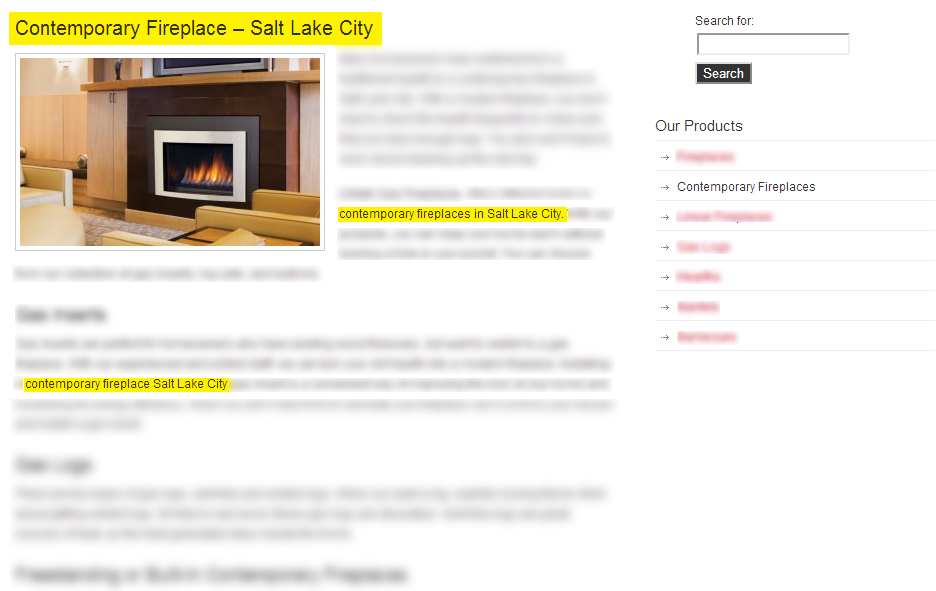
Note several elements that work in the sample above: Since their pages were not keyword-optimized, we focused on adding keywords into their content, and using their main keyword for each page as the header (H1). We checked that the keyword density of the entire piece did not exceed 5%, and that they are relevant and not placed awkwardly in the text.
We’ve included navigational links at the side, which adds to better user experience for the site visitors and contributes to SEO. These navigational links sometimes overlap as keywords, allowing our client to rank better for keywords that they may not be consciously targeting for that specific page. Adding these sitewide links is a crucial part of on-page optimization, helping search engine crawlers discover your content from anywhere in your site easily.
In order to maintain this site’s – and any site’s, for that matter – performance after initial optimization, you need continuous keyword optimization efforts. This means shifting your gears towards new keywords that you may target while maintaining the rankings of the old ones. This is where we’re moving towards with this campaign right now even as we continue ranking their targeted keywords.
URL and Header Optimization
We made sure that the site’s URLs and headers were properly optimized for search. It’s not the fix all to the rankings, but it is still recommended to help both Google and the client’s visitors discover the content of each web page.
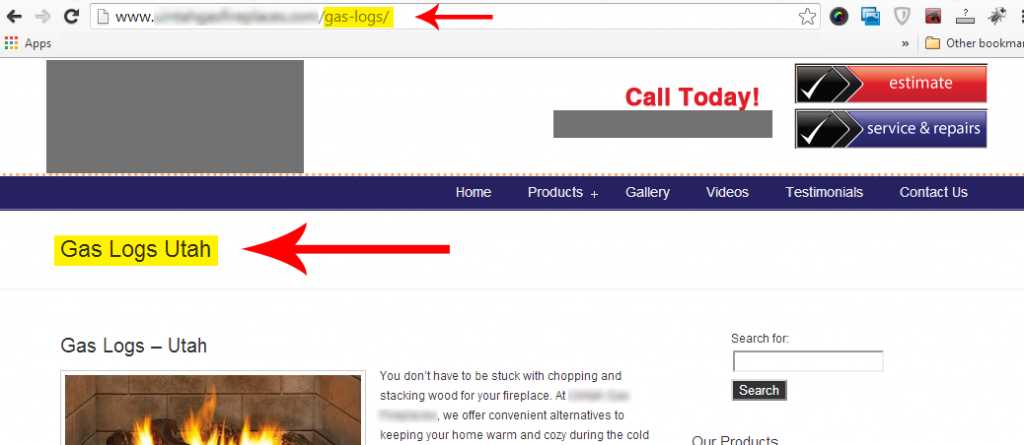
Metadata Optimization
In order to help search engines discover, index, and rank the website better, we recommended metadata optimization for the site’s pages. These recommendations were implemented and are now live on Google SERPs.
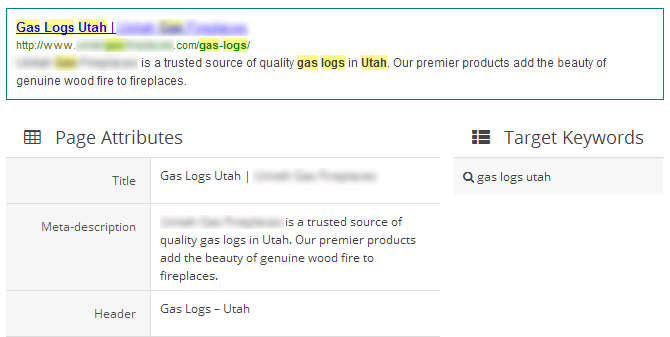
Note in the example above how metadata optimization has changed. Whereas before, writing metadata required statistical analysis and application, and whereas before we focused on character count and keyword density, this is not the case now. As with the on-page content, context matters – websites need metadata that is relevant to the content of each page. It has to be direct to the point, with the keyword integrated naturally.
Quality Link Profile
The client needed more assets on the web with content linking back to their site, which will have three benefits:
- A spread of different outlets online mentioning the site/brand.
- Authority reviews and posts about the clients products/services.
- Quality backlink profile, which Google will follow and reward them for in organic SERPs.
We began building links of different varieties, diversifying domains and content types. Our main focus was on increasing local visibility and citations, since they are a local business that requires geo-targeted traffic.
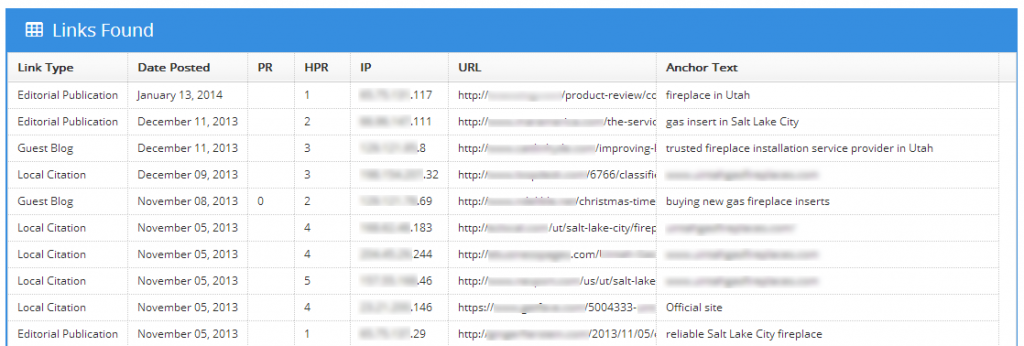
Content Diversity
Along with the link building strategy that we implemented, we also made sure to diversify the types of content that we get published in high-authority websites. We earned numerous editorial publications and various guest blogs with rich media for the client’s campaign.
Earned Local Citations
Because the client is a local business, we needed to ensure that their local listings and citations are consistent and updated across various platforms. We ran an audit to see what existing listings our client already has and optimized them for consistent branding and information.
Additionally, we created other local listings on platforms that we saw as relevant to the client’s target audience. This aids in local search discovery and increases their visibility locally.
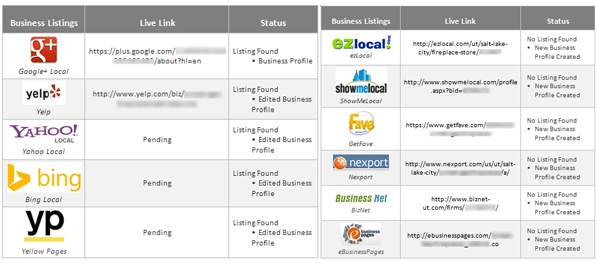
A Note on the Methodology
The secret to doing SEO right is looking at the facts with in-depth research and website audits, determining what marketing strategies your client needs, and implementing these according to Google’s standards. In this client’s case, we maintained consistency in language, representation, and optimization across the different areas of their campaign; produced quality content; and revisited and improved on our methodology to maintain or improve their rankings and boost traffic. This is proof that, when done right, SEO does work.
If you’re ready to see similar results in your campaigns, sign up as our partner and talk to us today. We’d be glad to help you develop an effective SEO strategy that gives your client the traffic and conversion boost they want.
